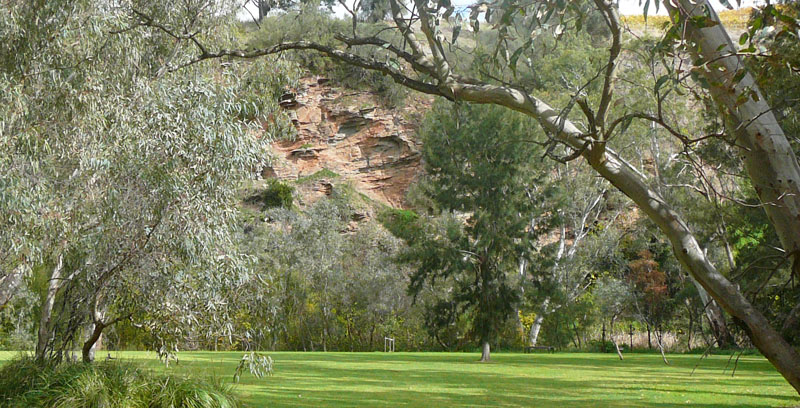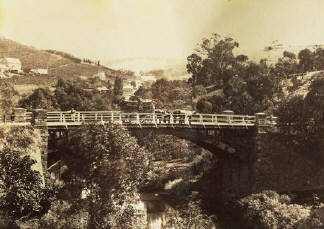The history of the Clarendon township starts with the first settlers in 1846.
James Philcox laid out the township of Clarendon for section 801 of the Hundred of Noarlunga which had been granted to Richard Blundell in England. Thirty eight acres were conveyed to William Leigh and the remainder to George Morphett.

The first inhabitants called the place “Toondilla” and the river bend (now the recreation ground) was a gathering place for corroborees. In 1850 a battle occurred between neighbouring tribes.
Even though the town was 18 miles from Adelaide, local residents would have to travel, by foot, to O’Halloran Hill and then by stage coach to the city to purchase supplies. The town became the centre of a thriving rural community of farmers, orchardists and dairy folk. (At times the peaceful village was disrupted by the herds of cattle on their way to market ranging through their gardens).
In 1850 the Tally-Ho hotel, later to become the bake-house, was built near the Onkaparinga River so that travellers could rest before crossing the river on their way to Goolwa. By 1860 Cobb and Co. ran a weekly passenger service through the town and by 1864 a regular daily mail collection was made.
The first Clarendon Council meeting was held in 1853 in the Morphett home and they purchased the Recreation ground and a Council Chamber which doubled as an Institute.

A wooden bridge was completed over the Onkaparinga in 1858. The Wesleyan Methodist Church on the steep hill (behind the Royal Oak Hotel) was built in 1851 and the Historic Hall was built in 1854. The present Methodist Church was erected in 1857 and the St. Ninian’s Church was built sometime in the early 1850’s. The Police Station and the Royal Oak Hotel were also built in the 1850’s.
The school building was completed in 1885.
Many businesses had sprung up during the first 50 years of settlement including two blacksmiths, a jam factory, a boot-maker, wheelwright, ostler and saddler. The Agricultural bureau (which is still active today) was formed in 1896 and held regular annual shows until 1914. The Literary Society functioned until 1917. There was a silver mine a few miles south of Clarendon where copper, silver and lead were mined.
The new pumping station was built in 1963, the tunnel was enlarged in 1964 and the weir was raised two feet in 1966. (For many years Clarendon has been a water catchment area, and it was planned to construct another reservoir in the Onkaparinga Gorge until pumping from the Murray River became a better option).
Many local sports clubs and community clubs commenced. The CWA commenced in 1946, and Cubs and Scouts formed by the local policeman in 1940. Rifle shooting, tennis, bowls, croquet, football (as early as 1870s) and cricket clubs were active. There were four lodges included the Druids, the Foresters Friendly Society, the Rechabites and the Oddfellows. The Rechabites bought the Butter Factory and later sold it to the community. It became the Community Hall. In 1973 the Kindergarten was built at one end. Over the years the Hall was a very important gathering place for birthday celebrations, weddings, parties, dances and school functions.
The Old Clarendon Winery was re-developed in 1979 and began a new life as a restaurant, art gallery, bakery and craft shop with many on-site craft studios.
The camp site at river bend for Legacy children and later the YMCA was converted to an open park and was connected to the Recreation ground. The oval pavilion was relocated and school children and the local community became involved creating the Peace Park near the bowling green, and re-vegetating the riparian area along the Onkaparinga River.

In 1979, a small group developed from the Hall Committee to represent the community. The Clarendon Community Association was formed to lobby the Government and the Council for township developments.

